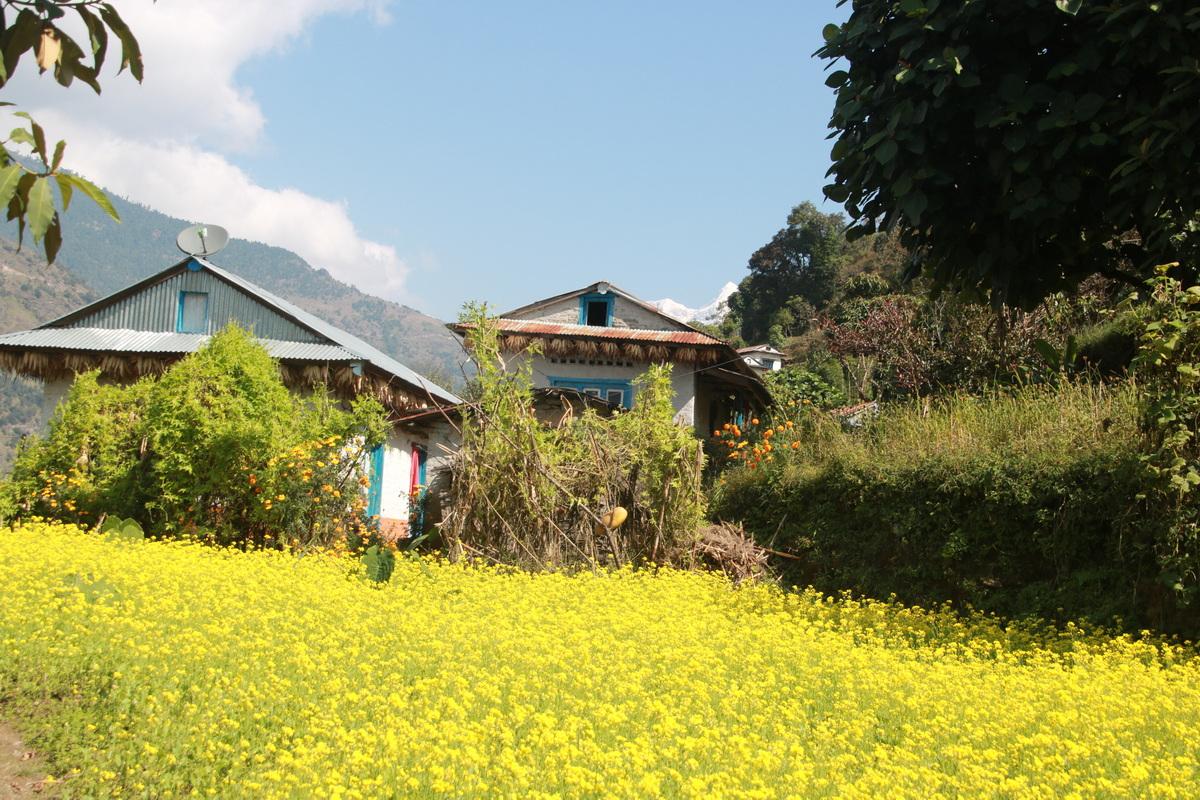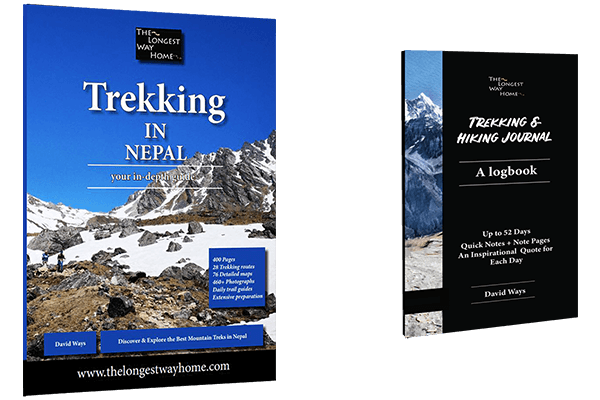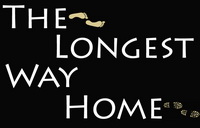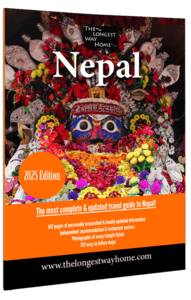

Bhandar to Liklu River
The rolling joke about there being so many Bhandar’s continued into the next morning’s trek after day two trekking Pikey Peak. In Nepal, if a new joke is found, it’s the highlight of an entire day. The day started, and Raj made sure to mention the many steps of today.

Both up and down. It was also a day when we could speed things up a little if needed. We theoretically could make Nagaor Gumba today if we had knees like mountain goats. Or at least Goli Gumba.
I don’t like steps, especially the downward ones. Last year, I did 5 treks in one season and by gosh, did I feel it. Since then, I’m taking the notion of slowly, slowly, and enjoy more. So, I left the idea float away and just said “Let’s see”. This wasn’t a trek for the sake of a trek. It was a new trek that I wanted to enjoy. And document the Pikey Peak Trek not only for this website but also my Trekking in Nepal guidebooks.
Our steps began, and in earnest, I slowed down. They were steep, but windy, which was good. Then, almost as if the joke really wasn’t a joke, we came across the village of “Bamti Bhandar”. I’d love to say we laughed, but we really were beginning to lose count of how many real Bhandar villages there were. Liku river finally appeared. That meant the downward part was over. Now it was up, up, up.
Liku River to the Cardamom Farms
Changing gear from spiraling stone steps to upward slopes was a bit of a grind. The nice thing about trekking in Nepal is that you often get distracted by mountain villages. Farming in the mountains is not about cash crops; it’s about farming to live. People barter goods up here, similar to the big trading villages back in the day.

In this case, cardamom crops were being harvested. I’d never seen cardamom outside of the final “spice” in a packed. Or in the fields. These pods contain all the aromatic seeds used in cooking. Stopping for a chat with the ladies, it seemed that while this crop was going to be used in local cooking, there was enough to be sent to Shivalaya or Jiri to sell. But first, they have to lie the seeds out to dry. From there, it would be sent to Kathmandu to the big markets.
For those wondering, yes, those plants also smell of cardamom!

Take a Break in Namkheli or Continue On?
This is one of those moments where we arrived early, and we’re wondering, should we go on? The sun was shining. There were mountains peeking over the tree line. Raj mentioned there being many monasteries between Namkheli and Nagaor Gumba. Again, I say this to many young trekkers: What’s the rush? It’s not a race. If we rushed now, then we wouldn’t get to see the monasteries properly tomorrow.
I’ll be the first to recognize that most “younger” people don’t seem interested in “visiting” monasteries up in mountains. But nearly everyone wants a nice “Instagram” photo to post. This is where multiple years of experience trekking in Nepal will tell you… slow down. There’s usually a bevy of cloud rolling in during the afternoons in the mountains. You won’t get a nice photo.
It also tells you about the stuff nobody wants to know about. Washing clothes. Stopping early for one day means a clothes wash, and the next day they “should be dry”. Yes, it’s all boring, but it means your socks will be fresh, and it really does make a difference to have clean socks on the trails instead of stick socks… ewww. Hey, it’s reality!

So tomorrow, the mountains unleash themselves in full. And I have to show some nice monastery in the mountain photos to prove my worth!
Pikey Peak 9-day trek
- Day One Trekking Pikey Peak: – Permits, Planning & Kathmandu to Shivalaya
- Day Two Trekking Pikey Peak: – Shivalaya to Bhandar
- Day Three Trekking Pikey Peak: – Bhandar to Namkheli
- Day Four Trekking Pikey Peak: – Namkheli to Nagaor Gumba
- Day Five Trekking Pikey Peak: – Nagaor Gumba to Pikey Peak Base Camp
- Day Six Trekking Pikey Peak: – Pikey Peak Summit to Jase Bhanjyang
- Day Seven Trekking Pikey Peak: – Jase Bhanjyang to Junbesi
- Day Eight Trekking Pikey Peak: – Junbesi to Phalpu
- Day Nine Trekking Pikey Peak: – return to Kathmandu
Unlock the ultimate trekking adventure with my Guidebooks to Nepal!
Elevate your trekking experience with the most comprehensive guidebook dedicated to Trekking in Nepal. Discover 29 full treks (including this one) spanning over 400 pages, providing unparalleled insights. What sets it apart? It’s the only guidebook globally featuring trekking links, guiding you on seamlessly connecting treks Whether you prefer an instant download or the paperback edition shipped worldwide, this guidebook is your passport to unmatched exploration.
Ready to embark on a journey beyond the ordinary?

Get the Digital Trekking in Nepal guidebook!
Grab the Paperback Trekking in Nepal Guidebook!
Explore the Paperback Trekking & Hiking Journal!
If you’re seeking a holistic guide covering the entire country or focusing on the most popular treks, dive into my full Nepal Guidebook. It stands as the world’s sole guidebook incorporating entry prices for every attraction, comprehensive maps, and, of course, the finest information.
Discover why this book surpasses all others: Find out more here!


The advice about not rushing for the perfect Instagram photo is spot on. Did you manage to capture some good shots of the monasteries?
Yes, the monasteries are a highlight coming from this direction rather than the more common Dhap direction. Photos of them in the next update.
The cardamom farms sound fascinating! Did you get to taste any of the fresh cardamom during your visit?
I was curious too. The smell was strong in a nice way. I had cardamom in Dal Bhat!
David, did you find the steps particularly challenging on this day’s trek?
Hi Rachel, I don’t like stone steps in general but it was okay on this trek coming from this direction.
Suspension bridges got me curious. How stable and safe are they for crossing?
The suspension bridges on this trek are quite stable and well-maintained. They add a bit of excitement to the journey but are generally safe to cross. Just take your time and enjoy the view. Thanks for your question!